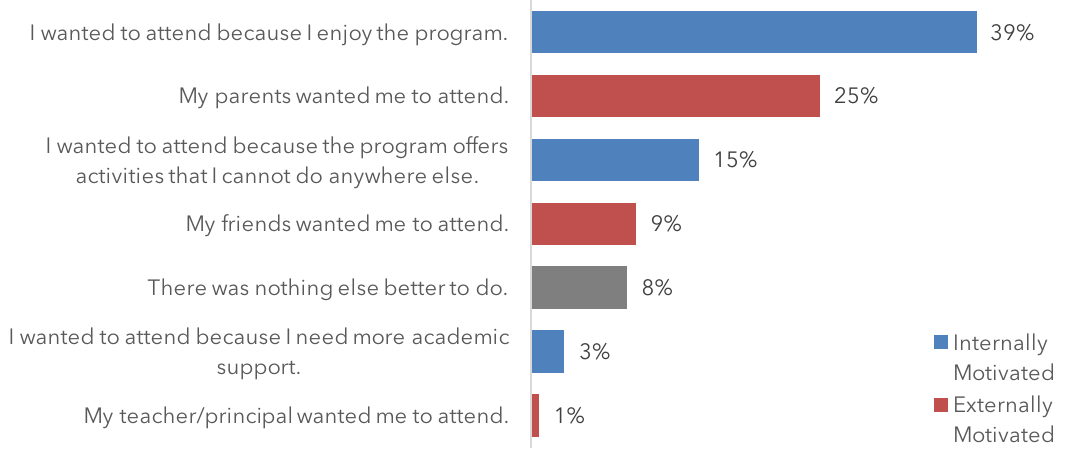Hello! We are Dana Linnell Wanzer, evaluation doctoral student, and Tiffany Berry, research associate professor, from Claremont Graduate University. Today we are going to discuss why you should measure participants’ motivation for joining or continuing to attend a program.
Sometimes, randomization in our impact evaluations is not possible. When this happens, there are issues of self-selection bias that can complicate interpretations of results. To help identify and reduce these biases, we have begun to measure why youth initially join programs and why they continue participating. The reason participants’ join a program is a simple yet powerful indicator that can partially account for self-selection biases while also explaining differences in student outcomes.
Hot Tip: In our youth development evaluations, we have identified seven main reasons youth join the program. We generally categorize these students into one of three groups: (1) students who join because they wanted to (internally motivated), (2) students who join because someone else want them to be there (externally motivated), or (3) students who report they had nothing better to do. As an example, the following displays the percentage of middle school students who joined a local afterschool enrichment program:
Hot Tip: Using this “reason to join” variable, we have found that internally motivated participants are more engaged, rate their program experiences better, and achieve greater academic and socioemotional outcomes than externally motivated participants. Essentially, at baseline, internally motivated students outperform externally motivated students and those differences remain across time.
Lesson Learned: Some participants change their motivation over the course of the program (see table below). We’ve found that participants may begin externally motivated, but then choose to continue in the program for internal reasons. These students who switch from external to internal have outcome trajectories that look similar to students who remain internally motivated from the start. Our current work is examining why participants switch, what personal and contextual factors are responsible for switching motivations, and how programs can transform students’ motivational orientations from external to internal.
Rad Resource: Tiffany Berry and Katherine LaVelle wrote an article on “Comparing Socioemotional Outcomes for Early Adolescents Who Join After School for Internal or External Reasons
The American Evaluation Association is celebrating Ed Eval TIG Week with our colleagues in the PreK-12 Educational Evaluation Topical Interest Group. The contributions all this week to aea365 come from our Ed Eval TIG members. Do you have questions, concerns, kudos, or content to extend this aea365 contribution? Please add them in the comments section for this post on the aea365 webpage so that we may enrich our community of practice. Would you like to submit an aea365 Tip? Please send a note of interest to aea365@eval.org. aea365 is sponsored by the American Evaluation Association and provides a Tip-a-Day by and for evaluators.


